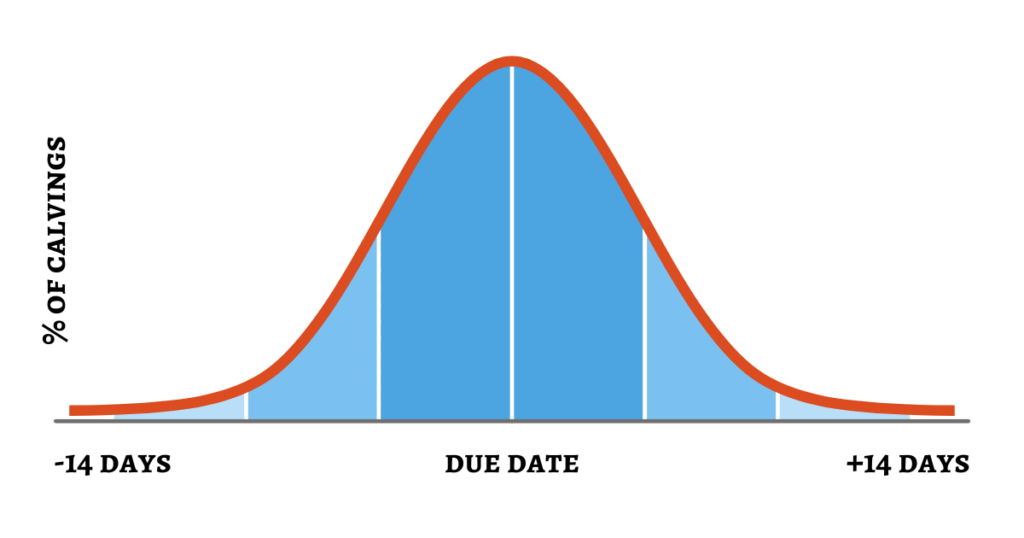
The standard gestation period for a dairy cow is 283 days. However, there is a slight variation between breeds, with the average Jersey gestation length being 278 days—or five days shorter than average.
Most gestation charts and calculators are based on a 283-day gestation period, so I created this custom 278-day gestation calendar for my Jerseys.
There are two copies of the gestation calendar included in this free download. The first one is for double-sided printing and is perfect for putting in a 3-ring binder. The second one is for single-sided printing and designed for hanging on your wall.
To use the calendar, find the date that your cow was bred (or the date you’d like to breed her) in the ‘Breeding Date’ column, and you’ll see the date that she is due in the corresponding ‘Due Date’ column.
The third column, ‘Dry Off Date’, is the date for your cow’s final milking before her dry period. The dry-off date in this gestation calendar is calculated based on a 60-day dry period. This length is considered optimum, as a shorter dry period can negatively affect colostrum quality and reduce milk production in the subsequent lactation. Conversely, dry periods longer than 60 days may lead to a higher incidence of metabolic problems after calving, often with no additional benefit to the cow or calf.
Although this calendar is customized for Jerseys, you can use it for other dairy breeds by adding the appropriate number of days to the due date as follows:
- Ayshire: 278 days (+0)
- Brown Swiss: 288 days (+10)
- Guernsey: 283 days (+5)
- Holstein: 279 days (+1)
- Milking Shorthorn: 283 days (+5)
Subtract 2 days from the due date for heifers (cows who are pregnant with their first calf), as they typically calve a couple of days earlier than cows.
The sire of the calf influences the gestation length by 48%. If you breed your cow using a bull of a different breed, this can affect the due date, so you’ll want to calculate accordingly.
For reference, here are the gestation periods of four beef breeds that Jerseys are commonly bred with:
- Angus: 283 days
- Dexter: 286 days
- Highland: 283 days
- Speckle Park: 285 days
Twins are often born 7-10 days earlier than single births. If you know your cow is pregnant with twins, you’ll want to start keeping an eye on her a couple of weeks earlier than you normally would.
The gestation period for bull calves is typically longer than that of heifers, and the longer a cow goes past her due date, the more likely that she’ll give birth to a bull calf. However, there are always exceptions to the rule. I’ve had three cows go 14 days past their due date, and in the end, two of the three had heifers!
And finally, keep in mind that due dates are a general guideline. Just like apples on a tree don’t all ripen simultaneously, not all calves are born on their due date!

Think of calving as a bell curve: while the majority of calves are born within 3-5 days of their due date, anywhere from 14 days ‘early’ to 14 days ‘late’ is considered normal.
